The dream (ish) video editing SSD enclosure

I’ve been shooting photos for 20 years, shooting video for 7 years, and creating videos for YouTube for 4 years. The one thing that’s been true every single year is that my need for additional hard drive storage keeps going up exponentially.
Obviously video takes a lot more space than photos, but I also just shoot tons and tons of footage to compensate for my lack of skill as a videographer and as a story teller. To deal with all this footage I had to develop a rat’s nest of SSDs and a complicated DAS based archive that I wrote about previously here.
I’m a big believe that if you want to do more of something, you need to make it as easy as possible, and this rats nest of SSDs was getting in the way of producing more content for Youtube, so I had to find an alternative.
What I used before
It started with a single Samsung T5 external SSD because I didn’t want to pay Apple’s exorbitant storage premium prices. Then as my storage needs grew I went from 1TB SSDs, to 2TB, and then eventually 4TB Sandisk SSDs. After that I went from 1 Active Editing drive to then having a backup drive for my active edit.
Then I needed a way to carry around my huge library of B-roll so I added two more drives.
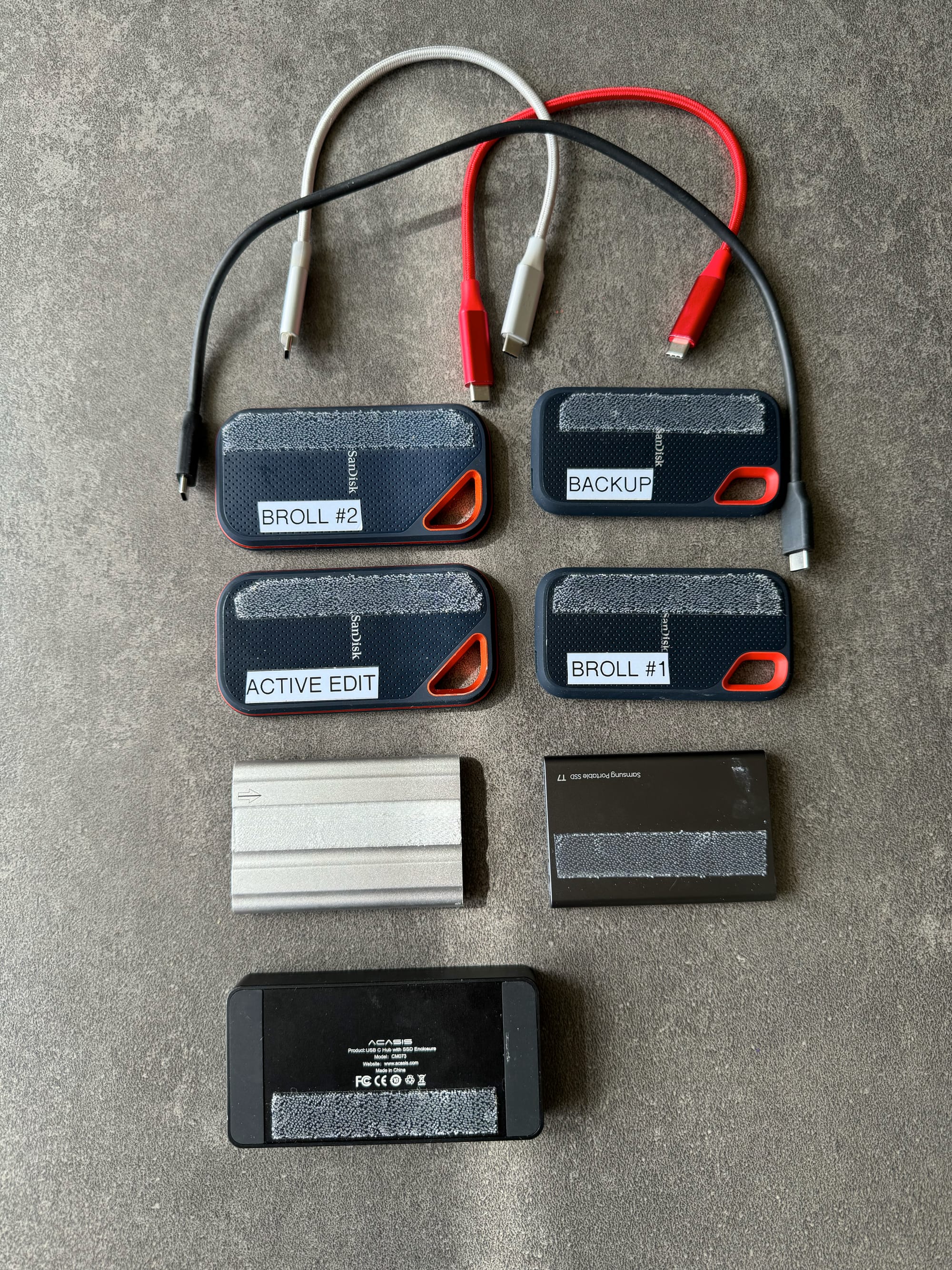
The Problem
Honestly, lugging around and trying to plug in 4 different USB-C SSD hard drives was never really an ideal solution. Sure I managed to get by, but it was a nightmare of juggling ports and keeping track of what files were on what drives.
The final nail in the coffin was the Sandisk Drive Failing scandal, which really stressed me out even though I was lucky enough not to have a drive fail. I then bought a Samsung SSD thinking that would be safe, but I’ve had to reformat that one a few times already because it keeps disconnecting from MacOS or getting stuck and only running at 5MB/s (which is basically unusable). So I knew what I wanted and I was ready to make a change:
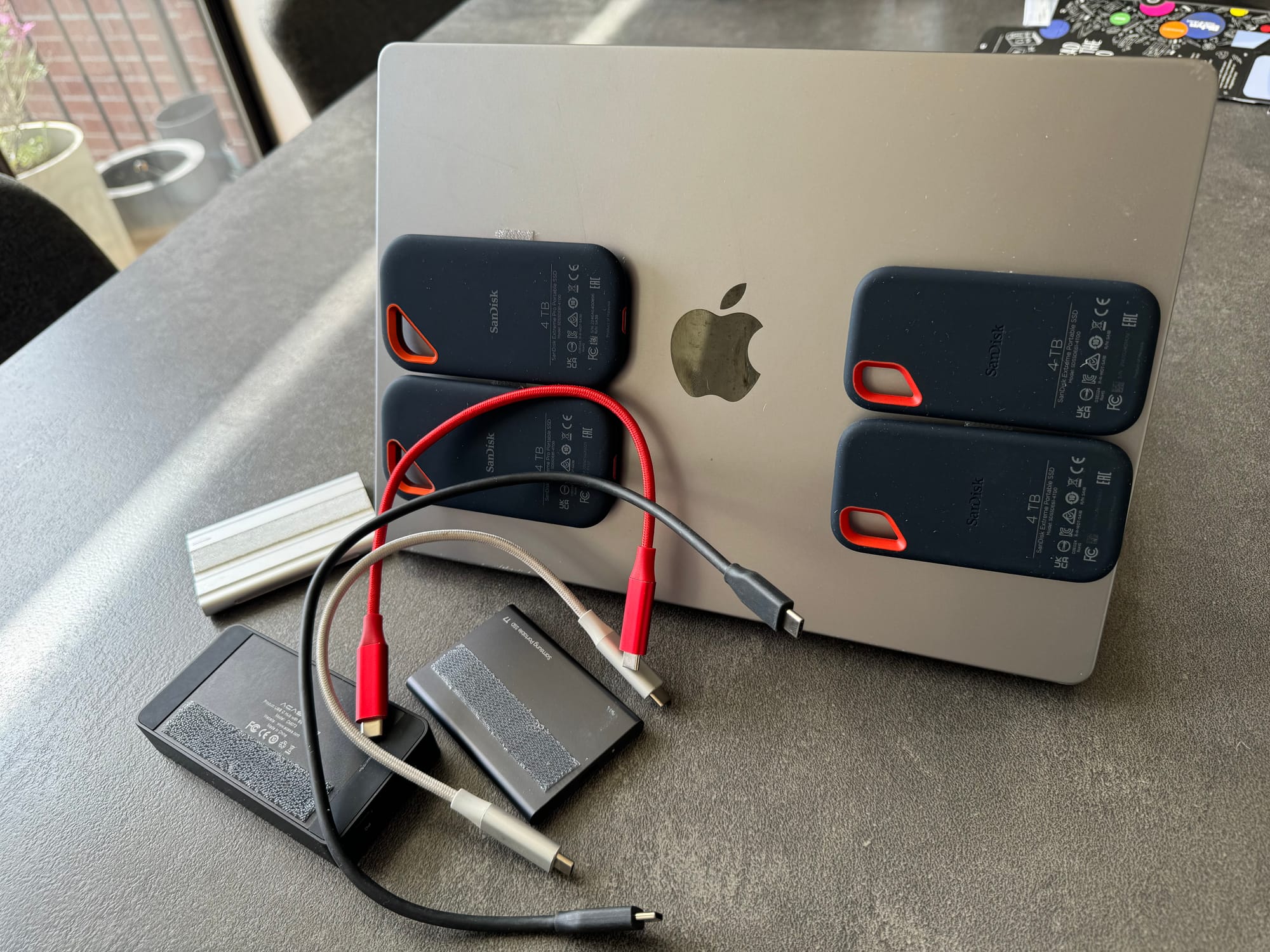
Requirements:
- Affordable, I don’t make enough money on YouTube to be paying for 8tb NVMEs at $800 to $1200 a piece.
- Local or DAS (direct attached storage), I don’t always have fast internet to be able to access huge files remotely
- Small and Portable
- Quick to plug in (one cable max)
- No power brick or proprietary power source that I could accidentally leave at home.
The hardware
I initially was looking at solutions like the OWC Express 4M2, or the Sabrent Thunderbolt 3 NVME SSD dock, or the new Sandisk Desk drive but ultimately ruled them out because of the big power brick that comes with them or their low storage capacity.
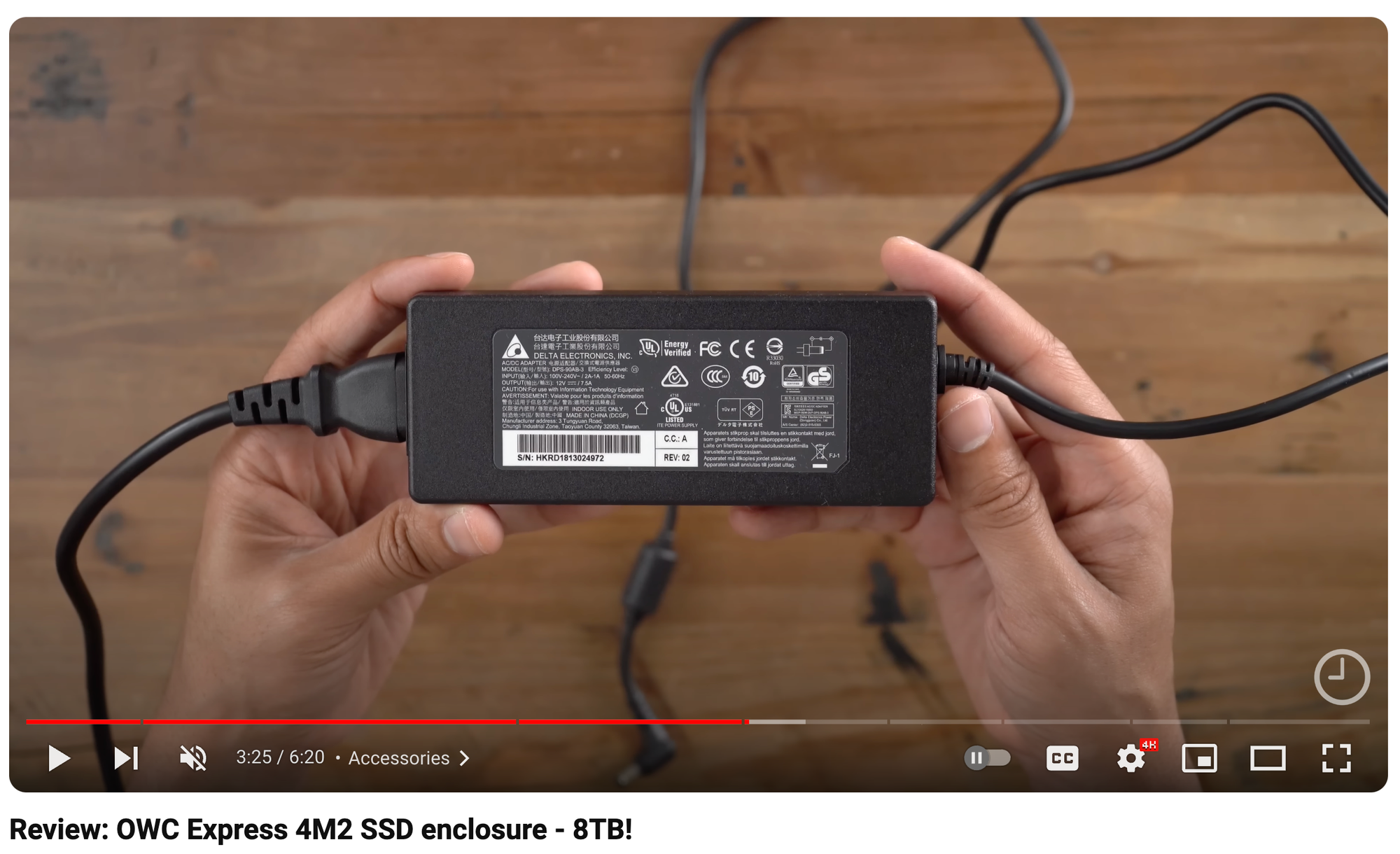
Then one day I’m browsing Amazon and I stumble across a Jeyi 4 bay NVME SSD enclosure that is powered by USB-C PD… and it was clear that this was unlike any of the other offerings out there.
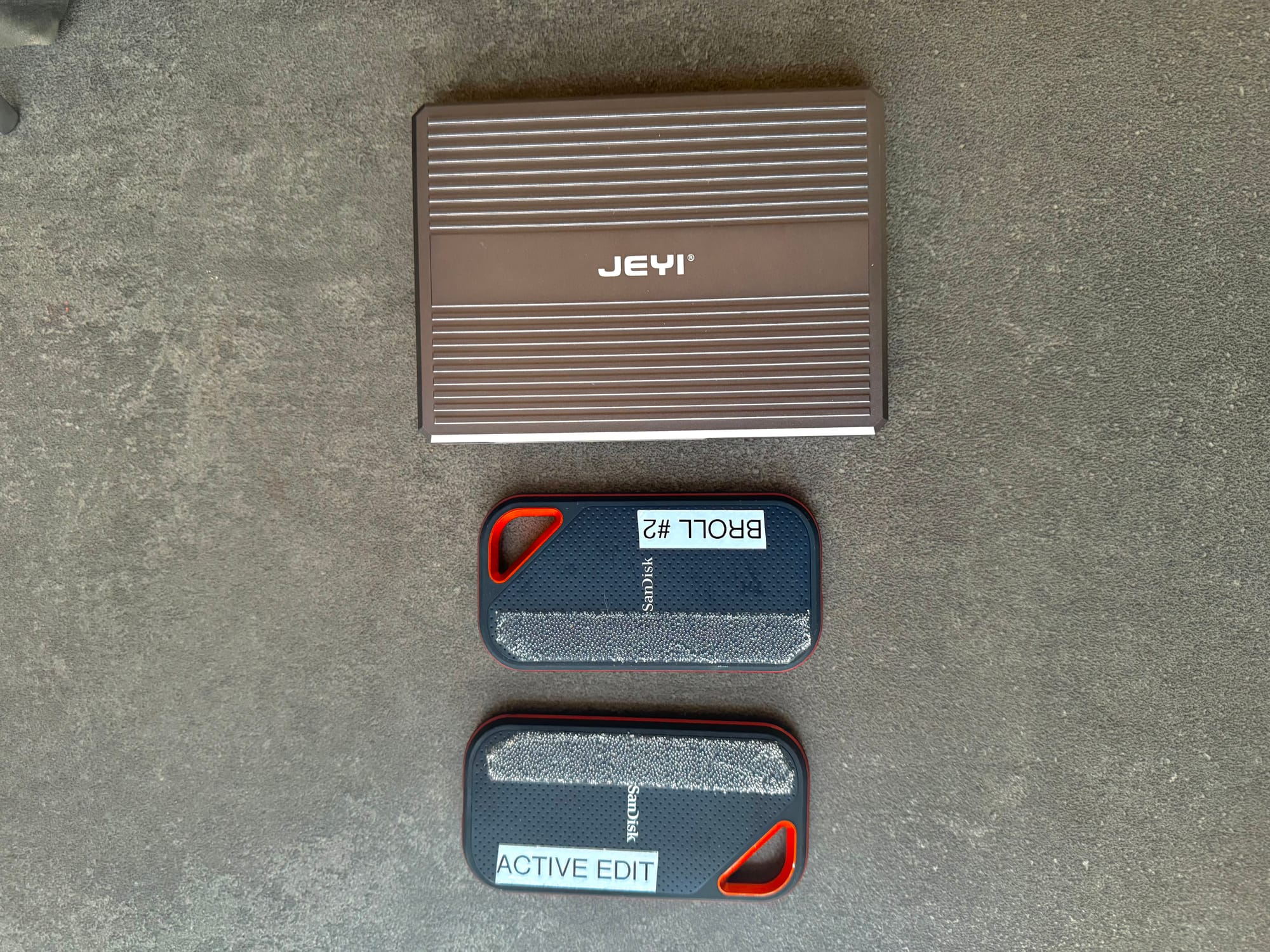
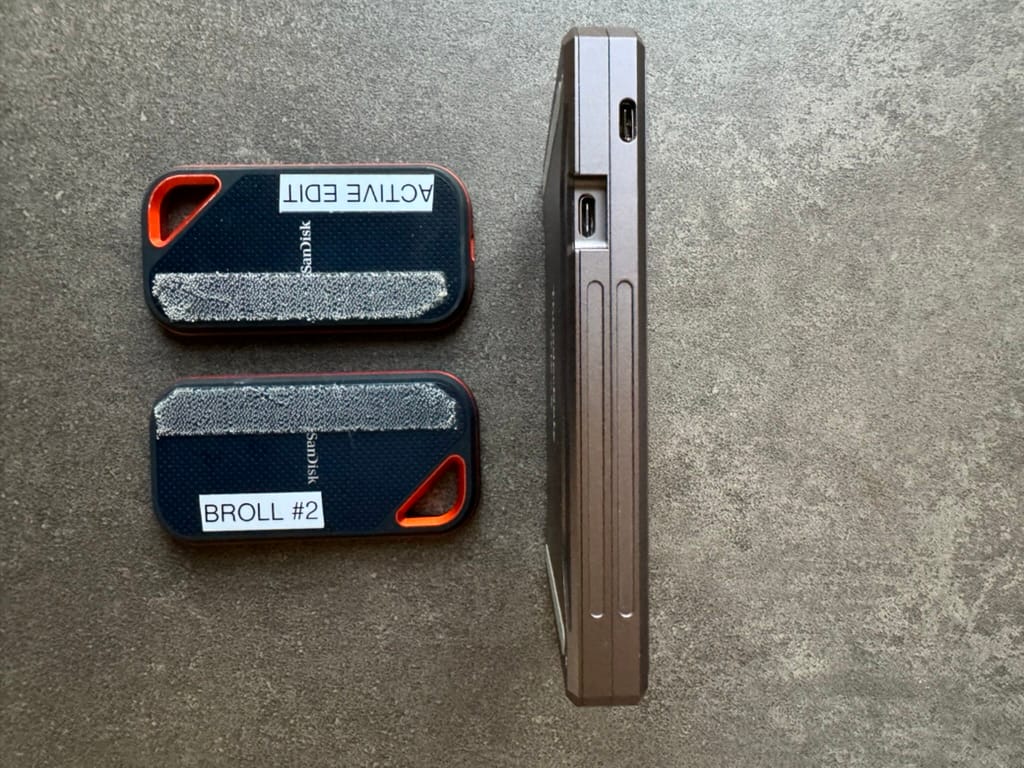
Summary of my thoughts on the Jeyi drive:
- USB-C power (no giant power brick, I can just use a small USB-C plug)
- Small device - it’s super slim and 4.5 by 5.5 inches.
- Easy to setup, I dropped 4 x 4tb drives in and was up and running in 5 min.
- Fast enough for me, got 500-600mb/s which matched my previous external drives
I didn’t want to pull the trigger because I didn’t know if it was any good, and then eventually they ran out of inventory on Amazon and on Aliexpress, and they never replenished it. I eventually bought two used ones off of eBay for $120, and it’s really been a huge improvement over my previous system.
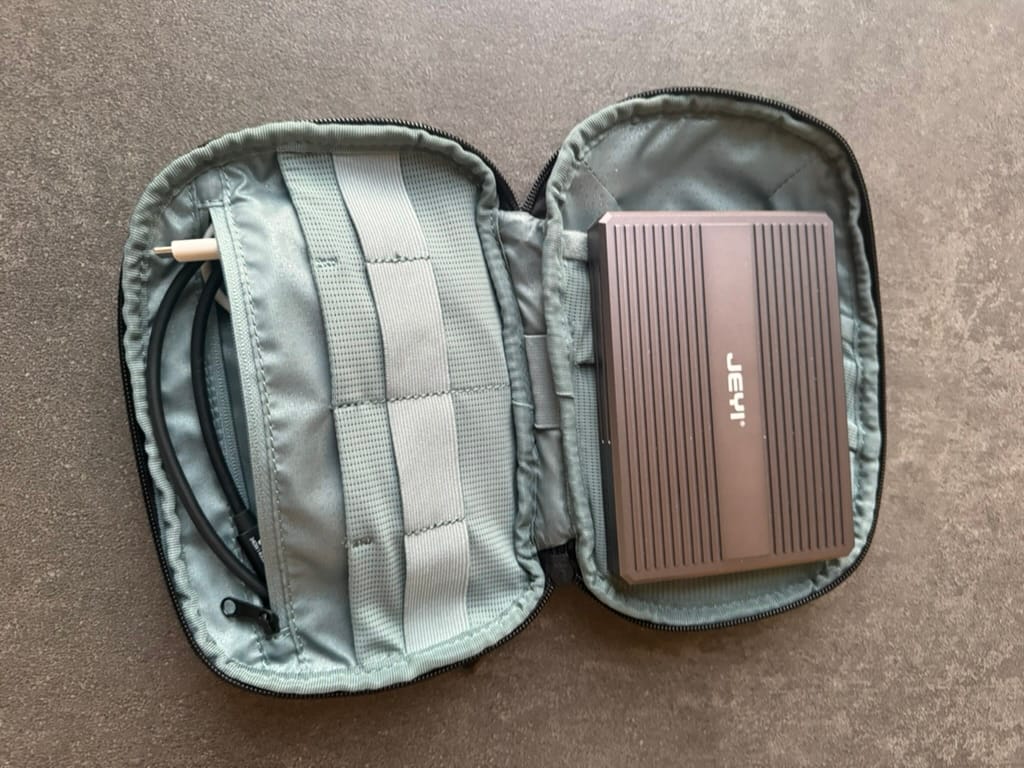
Everything fits in a medium Thule Subterra Powershuttle pouch, including the plug. I put 4 Silicon Power 4TB US75 NVME drives inside (got them for $200 each on Amazon), and it took less than 5minutes to install. I set them up in JBOD to keep things simple, though I know that I’m giving up on a ton of speed that I could get from putting them in RAID 0.
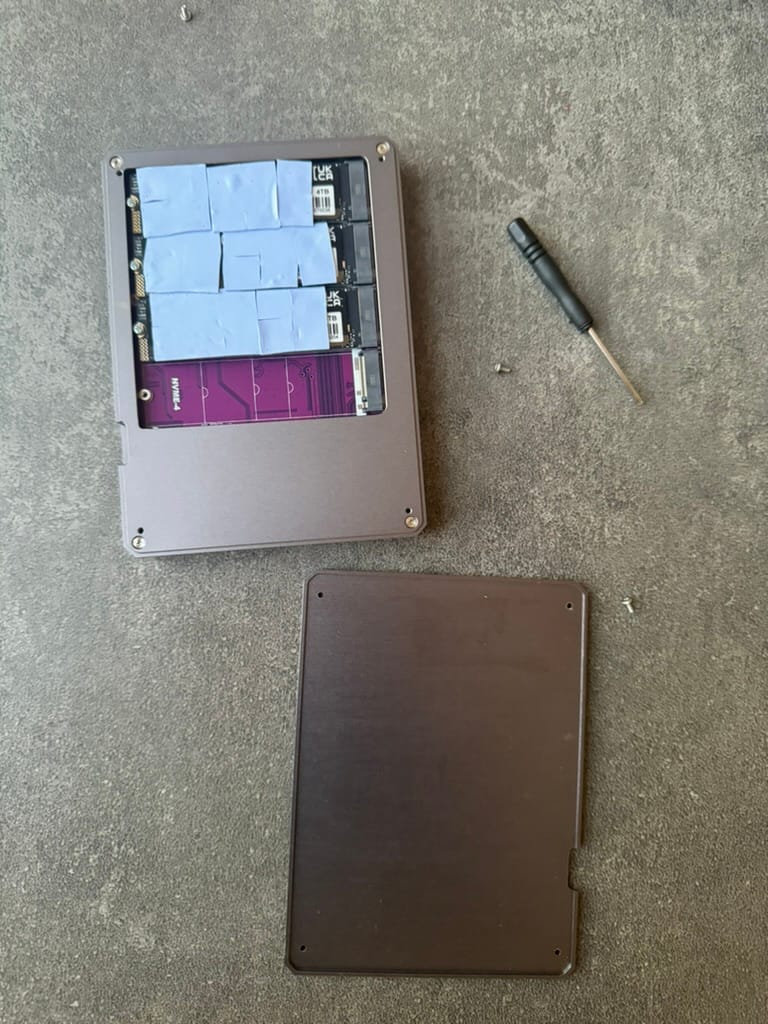
Down below I was able to copy 86.1GB from the Jeyi to a Sandisk external SSD in 2min flat, which works out to about 550MB/s. On the Blackmagic speed test app I was getting 700MB/s reads and 790MB/s writes.
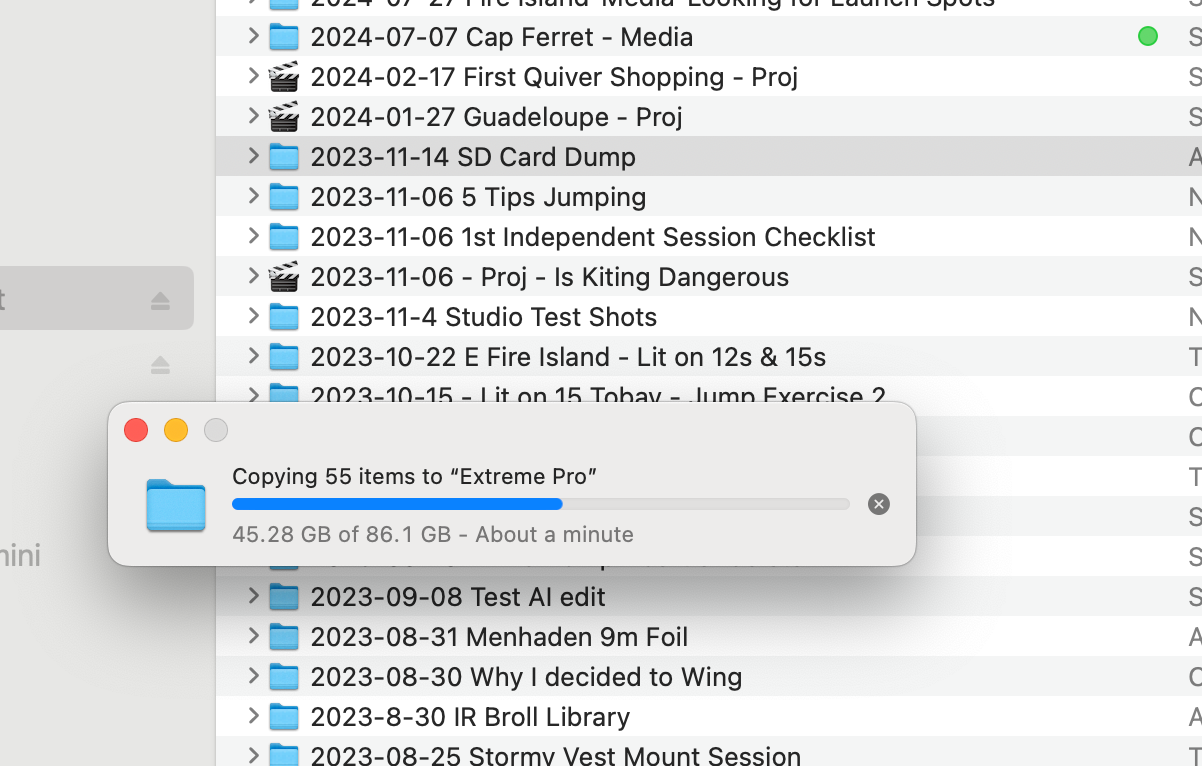
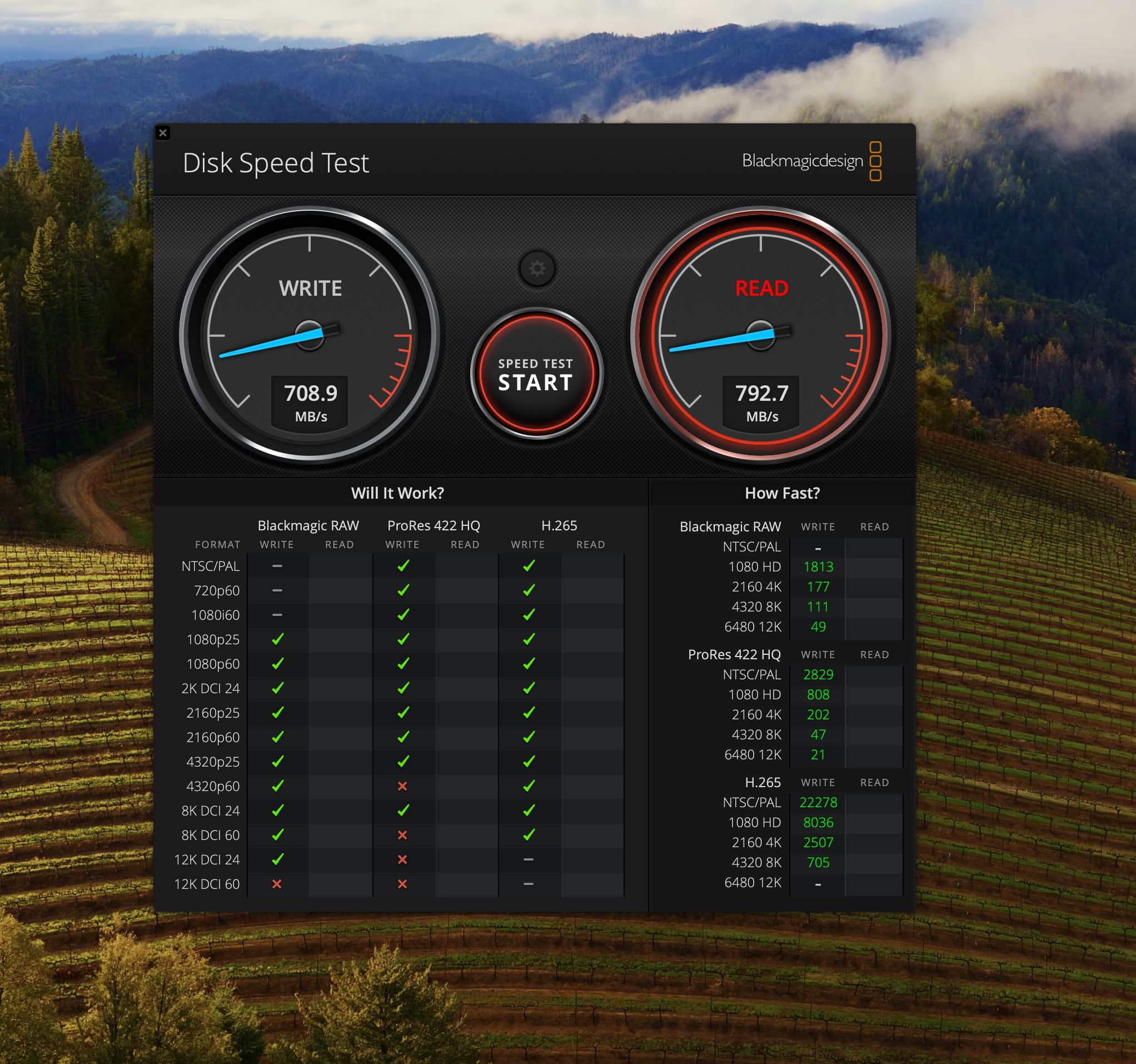
Copying the same folder to another drive on the same Jeyi enclosure yielded the same results, which surprised me, because I thought it would slow down.
Shortcomings
So no, this isn’t the dream drive yet. There are definitely some issues:
1) It’s likely discontinued, which is a major down-side. (I’m still trying to find an active vendor on AliExpress)
2) No idea if Jeyi is reliable or reputable (though their customer service did reply to my email).
3) I bought two used drives and one of them broke already. Can’t tell if that’s Jeyi’s problem or the previous owner’s.
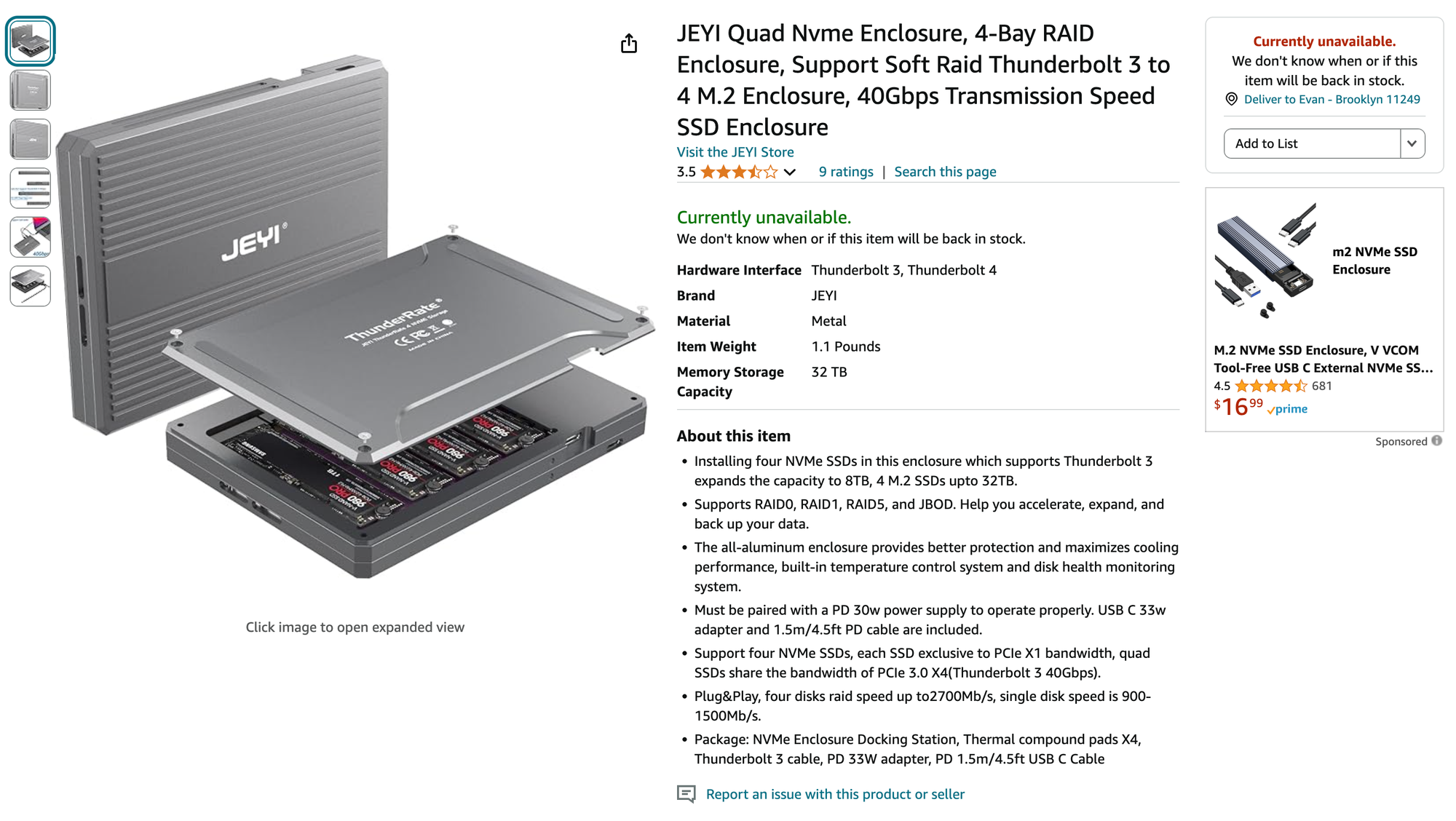
Summary
So the key take away is that creators need increasingly large storage drives, that are affordable and portable. The costs of 100s of TBs in separate drives piles up, and eventually it takes a huge toll on their time. The current offerings on the market don’t really hit that combination. The Jeyi represents a new category that checks the size, portability, price, and speed boxes for me, but it’s not clear if it’s still on the market.
I hope that other creators are coming to this conclusion and hard drive brands will start to make more of these. I’ve had a long successful track record with OWC in particular, so I’d love to see them make a slim 4 bay NVME enclosure like this with USB-C PD power.